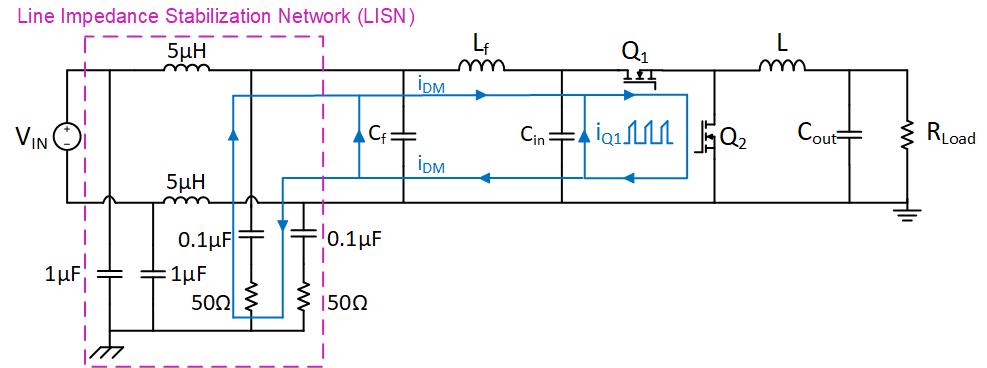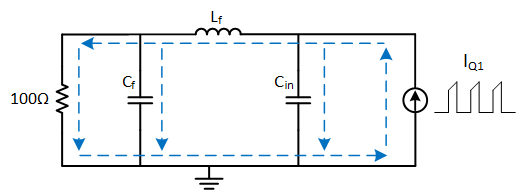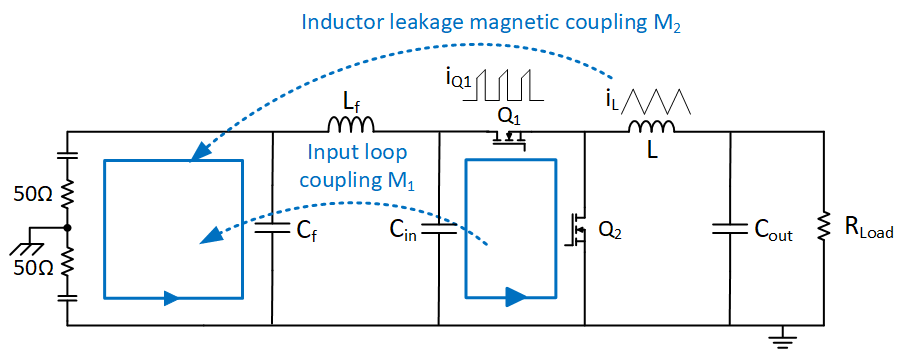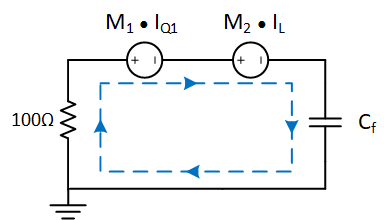SNVAA93 December 2023 LMR38020-Q1 , LMR38025-Q1
2.1 DM Noise Emission Model
A typical buck circuit with an input EMI filter (Lf, Cf) is shown in Figure 3-13. The dashed line highlights the Line Impedance Stabilization Network (LISN) measuring conducted noise. The switcher’s input current iQ1 is discontinuous resulting in fundamental and lower-order harmonics as well as high frequency noise current. Differential noise is caused by the opposite propagation paths between the positive and return power lines and is related to the fast di/dt of the input current, so it can be equivalent to current source diven model like Figure 2-5. The EMI filter can reduce the fundamental and lower order harmonics but it may be less effective in reducing high frequency DM noise due to parasitic parameters of inductors and capacitors. In order to reduce high frequency DM noise, package technology and layout routing techniques become important to mitigate these sources of noise in the system.
 Figure 2-1 Propagation Path of DM Noise Induced by di/dt
Figure 2-1 Propagation Path of DM Noise Induced by di/dt Figure 2-2 Emission Model of DM Noise
Induced by di/dt
Figure 2-2 Emission Model of DM Noise
Induced by di/dtBesides, the input current loop can induce magnetic field that bypasses the EMI filter and couples to the LISN as shown in the Figure 3-22. This magnetic coupling is modeled as mutual inductance (M1). The leakage magnetic field of the power inductor also couples to the LISN network with a mutual inductance (M2). Its emission model can be equivalent to Figure 3-25. Both types of magnetic coupling can generate DM noise current. To address these, it is critical to minimize the input current loop of the buck converter by strategically placing the input capacitor to reduce magnetic coupling (M1) and it is also beneficial to use a fully sealed inductor to reduce magnetic coupling (M2).
 Figure 2-3 Propagation Path of DM Noise
Induced by Magnetic Coupling
Figure 2-3 Propagation Path of DM Noise
Induced by Magnetic Coupling Figure 2-4 Emission Model of DM Noise
Induced by Magnetic Coupling
Figure 2-4 Emission Model of DM Noise
Induced by Magnetic Coupling